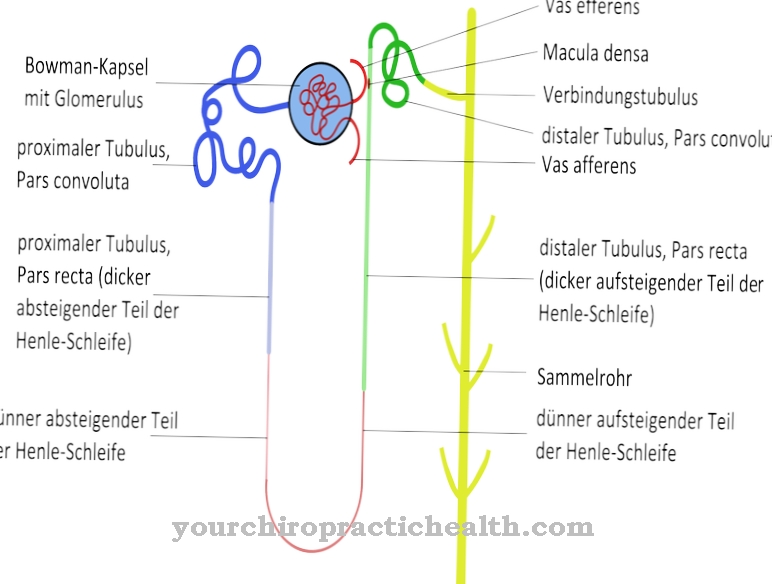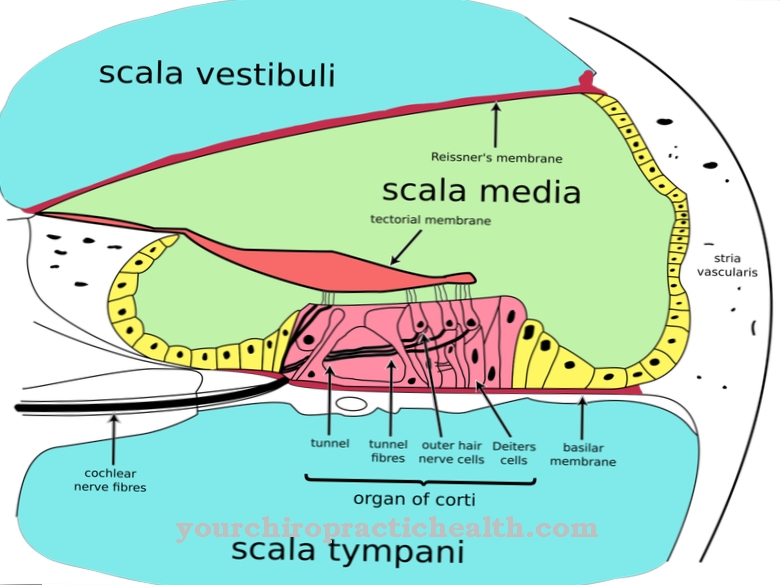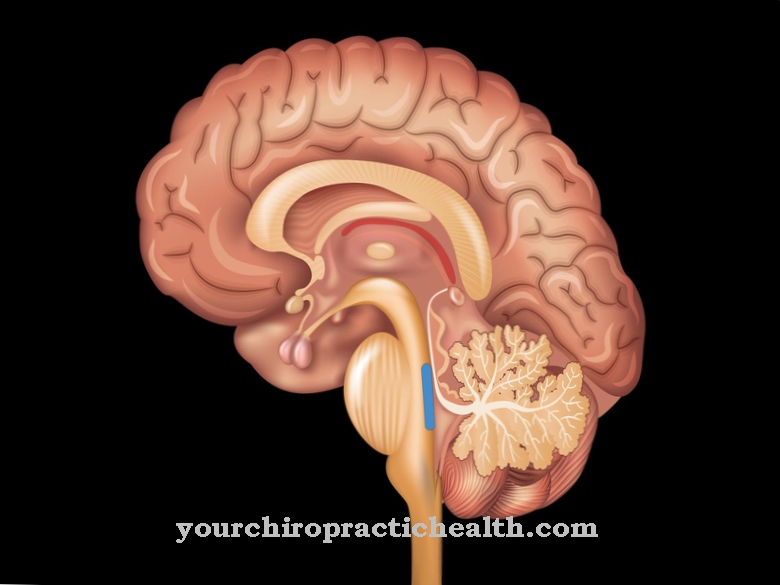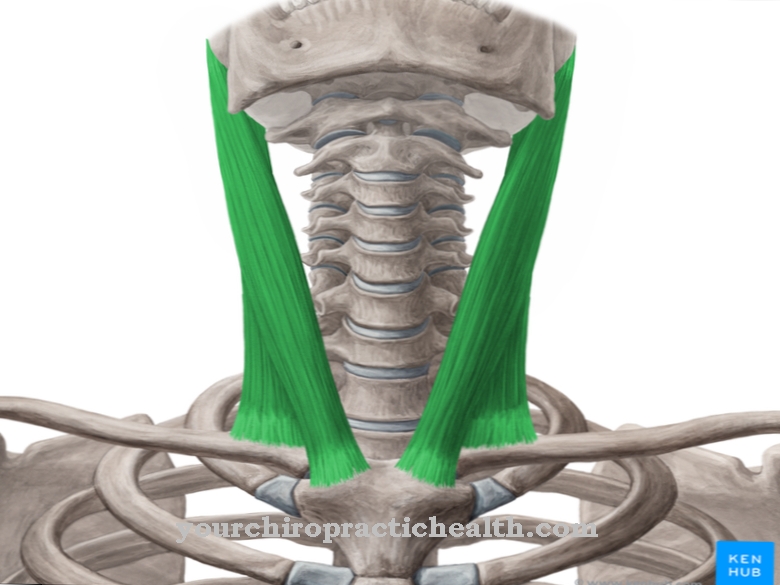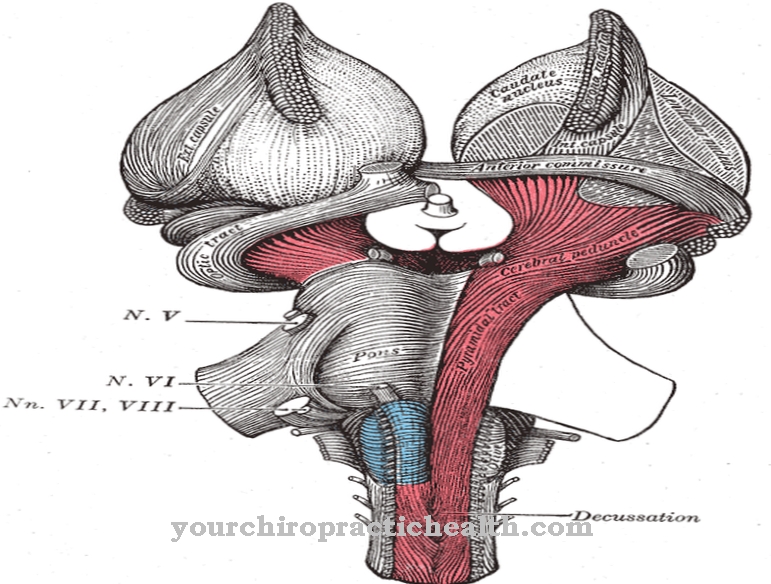Of the Digastric muscle as part of the head, especially the upper tongue muscles, is responsible for the mobility of the mouth and jaw joint. In addition, it influences swallowing, speaking as well as yawning and voice shaping. If the digastric muscle is tense, mild to severe complaints can occur across the body that are not always directly attributable to it. This can lead to massive health problems for those affected due to a lack of diagnosis for targeted treatment.
What is the digastric muscle?
The digastric muscle, in English two-bellied muscle (skeletal muscle) and formerly also known as the biventer mandibulae muscle, is part of the head, especially the upper tongue muscles.
The muscle is involved in mouth opening (jaw joint mobility to open and close), yawning and speaking (vocal cord tension). If there is tension, it can lead to serious head joint asymmetry, which can almost always extend to the entire body with many physiological restrictions. The digastric muscle must therefore always be viewed in a holistic focus through its aforementioned actual tasks. Also, or above all, when symptoms such as earache occur without the ENT doctor, orthopedic surgeon, etc. being able to make a pathological diagnosis regarding this organ.
Anatomy & structure
The digastric muscle consists of two fleshy bellies, which are innervated by two cranial nerves. This innervation comes from the mandibular nerve in the anterior abdomen and from the digastric branch in the anterior abdomen.
The two bellies are connected by a tendon. The anterior abdomen (venter anterior) begins on the inside of the lower jaw. The posterior abdomen (venter posterior) begins on the temporal bone, more precisely on the mastoid notch (3). The muscle is arranged on both sides of the head (i.e. in pairs). Both muscle heads meet in the middle and form the common intermediate tendon, via which they are connected to one another, as already mentioned. This intermediate tendon is attached to the hyoid bone body with a connective tissue loop. It belongs to the suprahyal muscles (skeletal muscles coming from the cranial side, which start on the hyoid bone and are therefore located above the hyoid bone).
With this structure, the digastric muscle is not only responsible for many central processes, but unfortunately also for many complaints that are not always directly assigned to it. More on this in the next sections.
Function & tasks
One of the most important tasks of the digastric muscle is its part in the swallowing process. He lifts the hyoid bone or fixes it. In addition, this muscle is involved in the opening of the jaw. Two distinctions must be taken into account: The venter posterior, the back abdomen, is responsible for the elevation of the hyoid bone. The anterior venter, on the other hand, is responsible for opening the jaw.
In addition, the digastric muscle is responsible for yawning, speaking and swallowing. This makes him the antagonist of the masticatory muscles.
The suprahyoid muscles do not only form the floor of the mouth. Rather, it is the part responsible for chewing, swallowing and speaking. Together with the infrahyoid muscles, these are also responsible for positioning the hyoid bone as correctly as possible. In detail, the hyoid bone is raised by the digastricus and stylohyoid when swallowing. At the same time, there is support for opening the mouth. When swallowing, the hyoid bone is moved forward by the geniohyoid. The opening is also supported by the sideways movement of the lower jaw.
The mylohyoid is different. It mainly causes tension and lifting of the floor of the mouth. However, it can also support the jaw opening and the chewing movement. The suprahyoid muscles are also referred to as masticatory muscles due to the support when chewing.
You can find your medication here
➔ Medicines against memory disorders and forgetfulnessDiseases
Ear problems, irritable coughs and irritable throat complaints as well as a lump in the throat (globus feeling) but also swallowing difficulties (dysphagia) and voice disorders (dysphonia) can originate from the hyoid muscles. Diagnosing this is only possible by examining the muscles and fascia. If this does not happen, the patient will not receive a physical diagnosis.
The symptoms of irritable coughs and irritable throws are then often dismissed as psychological. In a sensorimotor body therapy according to Dr. Pohl loosens the fasciae and neck muscles. Most of the time the symptoms are resolved.
Difficulty swallowing occurs because the swallowing process is influenced by the asymmetrical digastric muscle guidance. The hyoid bone with the pharynx below it is lifted laterally by the muscle. Persistent swallowing difficulties can result. The pitch and strength of the voice (the so-called vocal cord tension) are determined by the muscles above the hyoid bone. If there are serious changes (worsening) without having a cold, head joint asymmetry with involvement of the digastric muscle may be present.
The lump in the throat is often associated with swallowing and breathing disorders, as well as nausea in the throat, vomiting and gagging. Tension often leads to a lowered and therefore increasingly tense head posture, with the chin facing closer to the neck. With this head position, an obstruction of breathing on the part of the person concerned is always mentioned.
The representations of the complaints such as shortness of breath and feeling of fear in the throat underline these symptoms and make it clear how much everyday life can be impaired.

